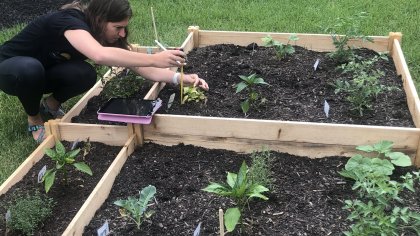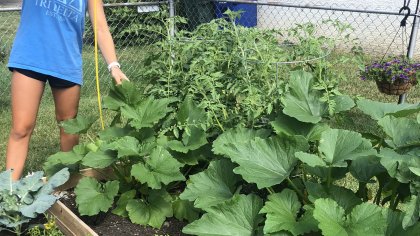Methods
Three different composting methods were used to grow a garden in Upper Arlington, Ohio. The three methods we used were, electric, tumble, and vermi-composting. To distinguish between the differing composting we named each method:
-Electric composter: Bitsy
-Tumble Composter: Bertha
-Vermi-composter: Betty/Baby Betty
Each week we measured the pH, moisture, and temperature of the soil as well as the height of the plants. After 5 weeks, plant growth maxed out, and we then started recording plant harvest.











